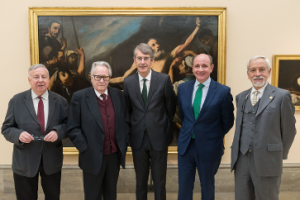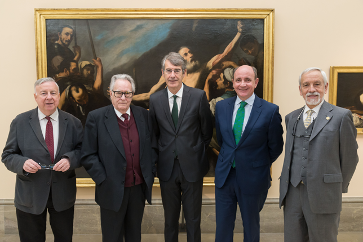New lighting scheme completed for the Museum at the Royal Academy of Fine Arts
The Corporate Director of Iberdrola España and Vice President of Fundación Iberdrola España, Fernando Becker, alongside the Director of the Royal Academy of Fine Arts of San Fernando, Fernando de Terán, inaugurated this comprehensive lighting scheme on the first floor of the Academy’s Museum.

Thanks to the new equipment, the Academy has gained in energy efficiency, reduced environmental pollution and substantially improved the appreciation, enjoyment and conservation of its works of art.
Following the first phase, which began in 2016, the Royal Academy of Fine Arts of San Fernando has completed the renovation of the lighting system on the first floor of its museum with the help of Fundación Iberdrola España. Thanks to the new equipment, the Academy has gained in energy efficiency, reduced environmental pollution and substantially improved the appreciation, enjoyment and conservation of its works of art.
Following the renovation, visitors now perceive a uniformly and evenly lit space, without jarring contrasts, which retains the appearance of natural light. This second phase of lighting renovation for the Royal Academy has focused on particularly important rooms in the permanent collection.
The project has been respectful of the museum’s false translucent glass ceilings, which serve as diffusers, and has combined general ambient lighting with accent lighting. The existing fluorescent lights have been replaced by LED tubes that light the facility uniformly, thanks to their 320o beam. For complementary accent lighting, LED projectors have been used to highlight works that required it due to their aesthetic characteristics or historical or artistic value. With this combination, visitors now perceive a uniformly and evenly lit space, without jarring contrasts, which retains the appearance of natural light.
The conservation of the pieces has also been improved as the new lights do not emit any ultraviolet or infrared radiation. The LED lights also produce less heat than traditional systems and reduce pollution, an advantage in environmental conservation. Last, but not least, the museum has been able to confirm major energy savings directly linked to the reduced consumption in comparison to conventional lighting.

